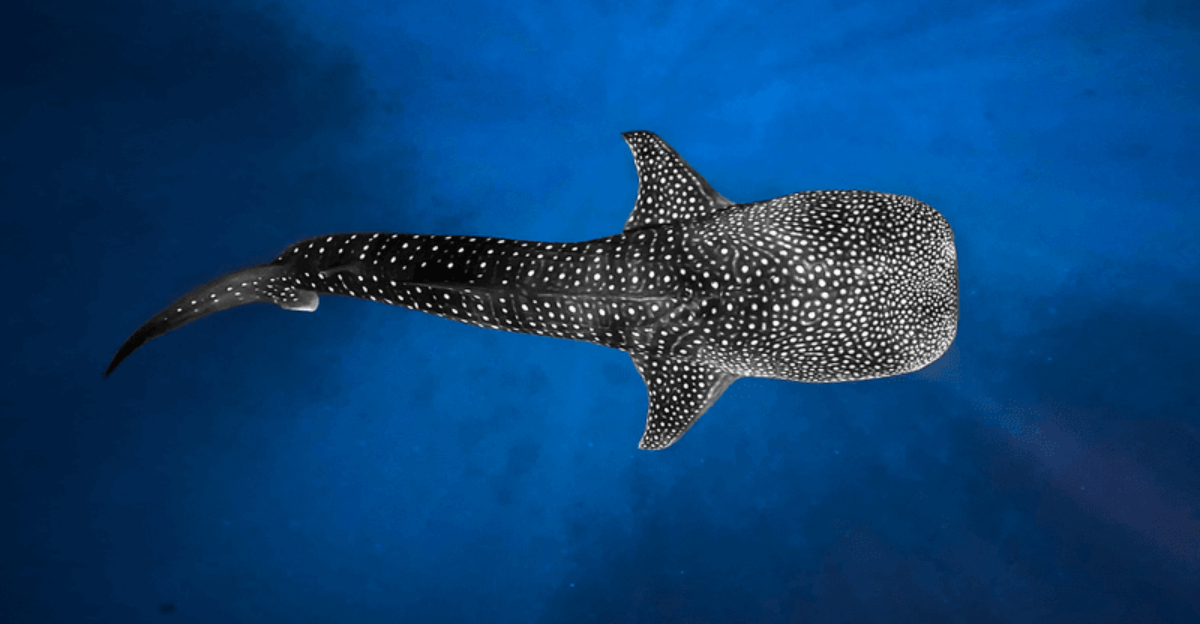The Atlantic Ocean is home to some of the largest and most fascinating shark species. These majestic creatures captivate our imagination with their size, strength, and presence in marine ecosystems.
From the infamous Great White to the elusive Greenland Shark, each species exhibits unique traits and adaptations that allow them to thrive in the vast ocean.
In this article, we explore the ten largest sharks inhabiting the Atlantic waters, revealing intriguing facts and characteristics about each one.
1. Great White Shark
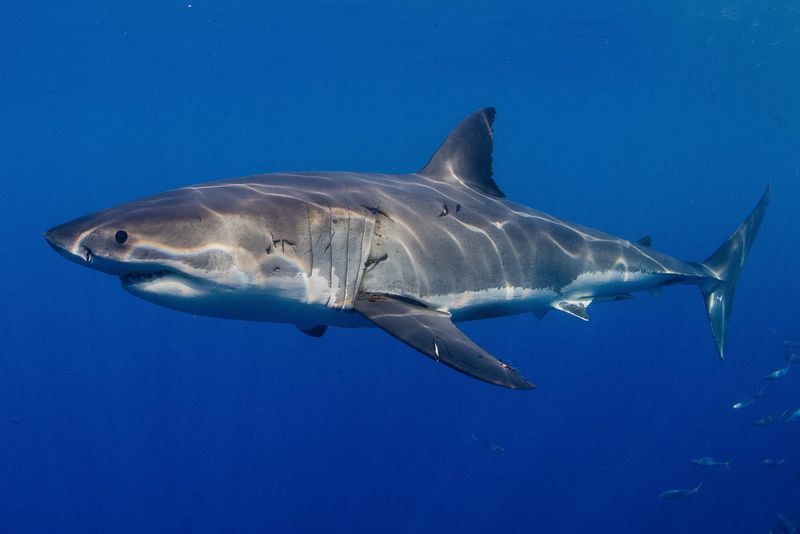
Dominating the top of the food chain, the Great White Shark is both feared and revered. These apex predators can grow up to 20 feet in length and weigh over 5,000 pounds. Their sheer size and power make them a formidable presence in the ocean.
As solitary hunters, they often patrol coastal waters in search of seals and other marine mammals. Their torpedo-shaped bodies and sharp senses make them efficient hunters. Despite their fearsome reputation, Great White Sharks play a crucial role in maintaining the health of marine ecosystems.
They help regulate the population of prey species, preventing overpopulation and ensuring balance. In addition to their hunting prowess, these sharks are known for their migratory behavior, traveling thousands of miles across oceans. Such journeys showcase their incredible endurance and adaptability to different environments.
2. Basking Shark
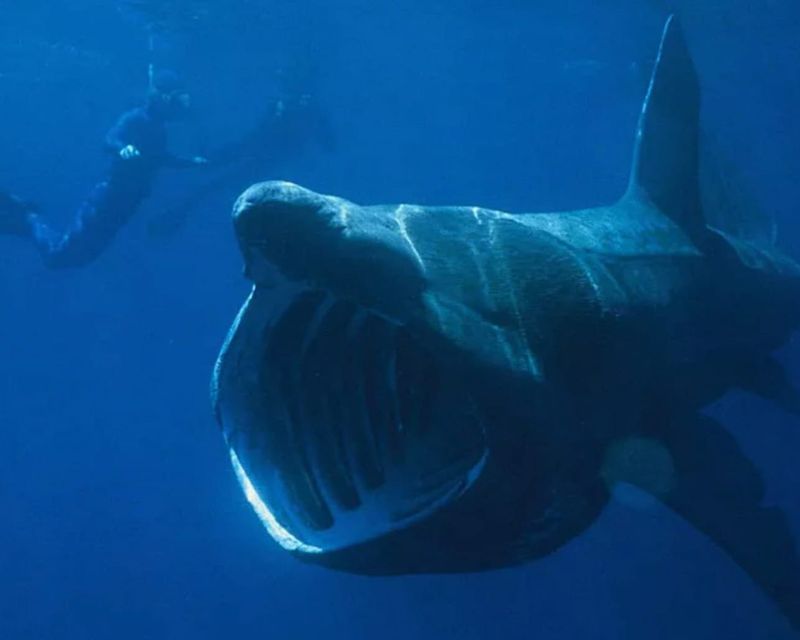
Known for their gentle nature, Basking Sharks are the second-largest fish species in the world, reaching lengths of up to 40 feet. Despite their intimidating size, they pose no threat to humans as they primarily feed on plankton.
These filter feeders swim with their mouths open, allowing water to flow through their gills to capture microscopic organisms. Basking Sharks are often seen leisurely cruising near the surface, especially in colder waters where plankton is abundant.
Their presence is a delight to marine enthusiasts and offers a glimpse into the diversity of ocean life. They are social creatures, sometimes gathering in large groups, making them easier to spot. Unfortunately, Basking Sharks face threats from fishing and habitat destruction.
Conservation efforts are vital to protect these gentle giants and ensure they continue to grace our oceans for generations to come.
3. Tiger Shark
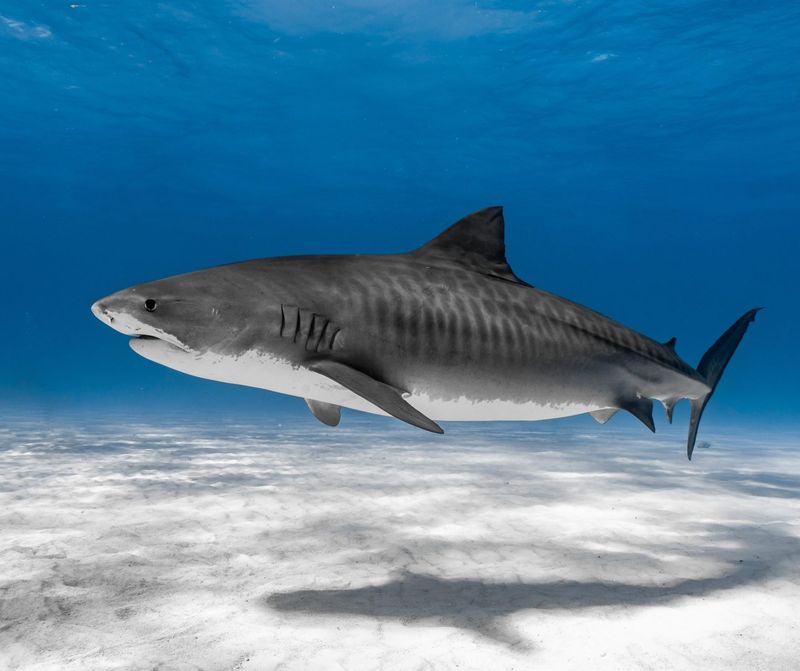
With a reputation for being one of the ocean’s most voracious predators, the Tiger Shark is known for its unique striped pattern. These stripes fade as they mature but are prominent in young sharks. They can grow up to 16 feet and weigh over 1,400 pounds, making them one of the largest shark species.
Tiger Sharks are opportunistic feeders with a diet that includes fish, seals, birds, and even inedible objects. This varied diet has earned them the nickname ‘garbage cans of the sea.’
Their powerful jaws and serrated teeth allow them to crack open hard-shelled prey like turtles. In addition to their impressive hunting skills, Tiger Sharks are known for their adaptability to different environments. They inhabit tropical and subtropical waters, and their migratory patterns often lead them close to coastlines, making them more visible to humans.
4. Hammerhead Shark
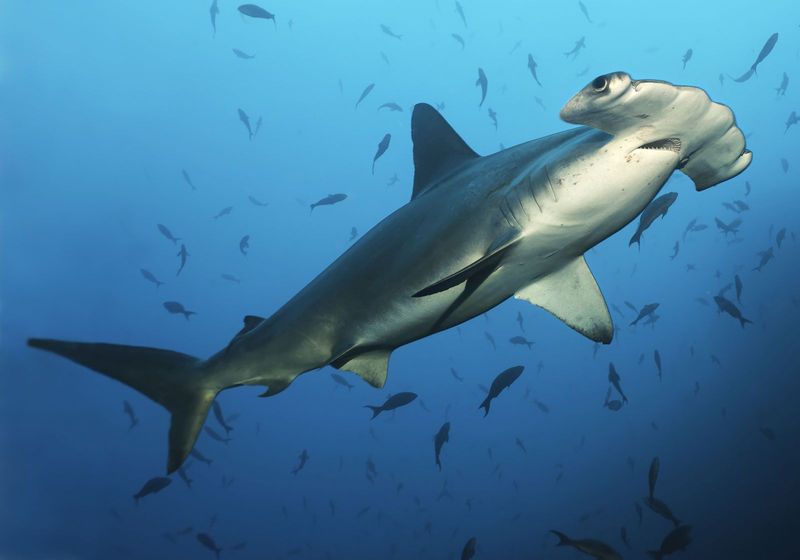
Hammerhead Sharks are easily recognizable due to their unique, hammer-shaped heads. This distinctive feature enhances their sensory perception, allowing them to detect prey more efficiently.
These sharks can grow up to 20 feet in length, and their eyes positioned on the sides of their head give them a wide field of vision. In the Atlantic Ocean, Hammerhead Sharks are known for their schooling behavior, often found in large groups.
This social nature adds to their allure among divers and marine observers. Their diet primarily consists of fish, squid, and crustaceans, which they hunt using their heightened senses. Sadly, Hammerhead Sharks face threats from overfishing and the shark fin trade.
Their populations have declined significantly, leading to conservation efforts aimed at protecting these fascinating creatures and ensuring their survival in the wild.
5. Shortfin Mako Shark
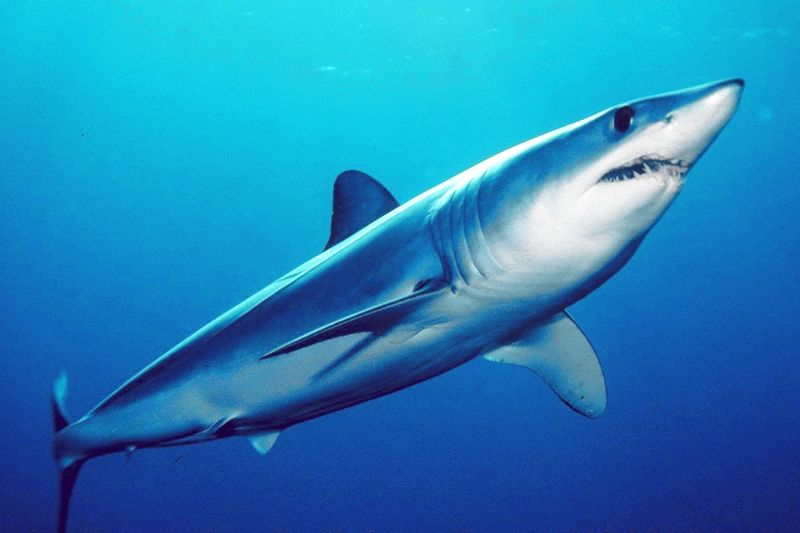
Renowned for their speed and agility, Shortfin Mako Sharks are among the fastest swimmers in the ocean, reaching speeds up to 45 miles per hour. This incredible speed allows them to catch agile prey like tuna and swordfish.
They can grow up to 12 feet long and weigh over 1,200 pounds. Their streamlined bodies and pointed snouts contribute to their aerodynamic efficiency. In addition to speed, these sharks possess remarkable endurance, capable of long migrations across the ocean.
Their striking blue coloration and robust build make them a sight to behold. However, Shortfin Mako Sharks are often targeted by commercial fishing for their meat and fins, leading to population declines. Conservationists are working to establish protective measures to ensure these magnificent creatures remain a part of our oceans for future generations.
6. Greenland Shark
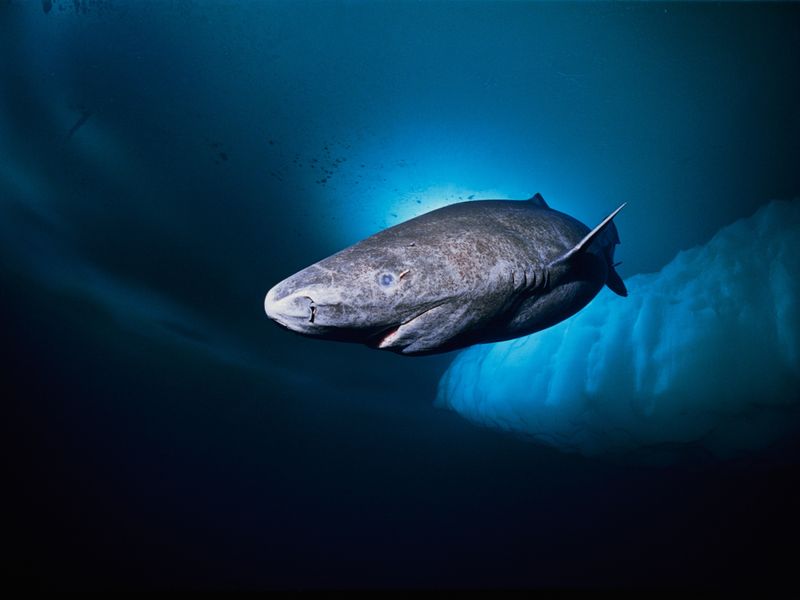
Adapted to cold Arctic waters, the Greenland Shark is a mysterious and ancient species. Known for their longevity, they can live for several centuries, making them one of the longest-living vertebrates. These sharks grow up to 24 feet in length and have a slow, deliberate swimming style.
Greenland Sharks are scavengers, often feeding on carrion and occasionally hunting live prey like fish and seals. Their slow metabolism suits their frigid environment, allowing them to conserve energy. Despite their size, they are rarely seen, living in deep waters far from human activity.
Their elusive nature and remarkable lifespan have intrigued scientists, leading to ongoing research to understand their biology and ecology. Protecting their deep-sea habitats is crucial for their conservation and the preservation of Arctic marine life.
7. Whale Shark
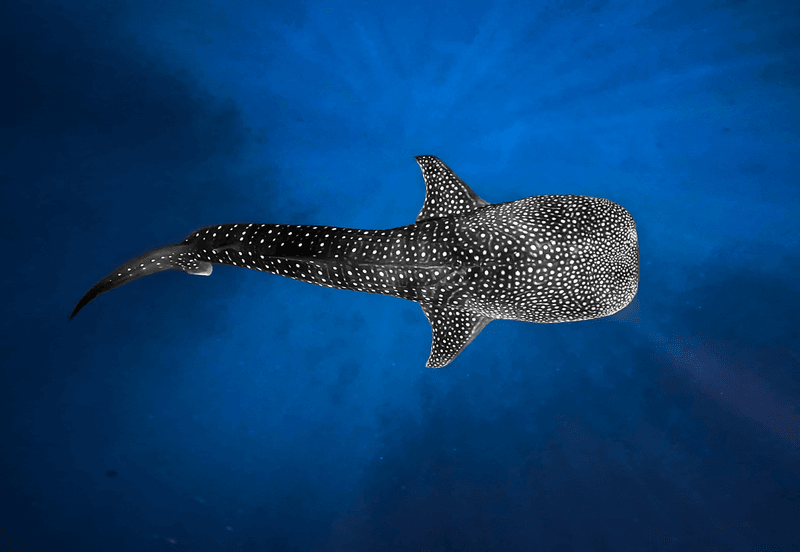
The Whale Shark holds the title of the largest fish in the ocean, measuring up to 40 feet in length. Despite their immense size, these gentle giants feed primarily on plankton, filtering large volumes of water through their gills.
Their distinctive spotted skin pattern adds to their majestic appearance. Whale Sharks are known for their docile nature, often allowing divers to swim alongside them. This behavior has made them a popular attraction in ecotourism, emphasizing the importance of their conservation.
They inhabit warm, tropical waters and are highly migratory, traveling long distances to find feeding grounds. Threats such as boat strikes, fishing, and habitat loss pose significant risks to Whale Sharks. Conservation initiatives focus on mitigating these threats and promoting sustainable tourism practices to ensure these magnificent creatures continue to thrive in our oceans.
8. Blue Shark
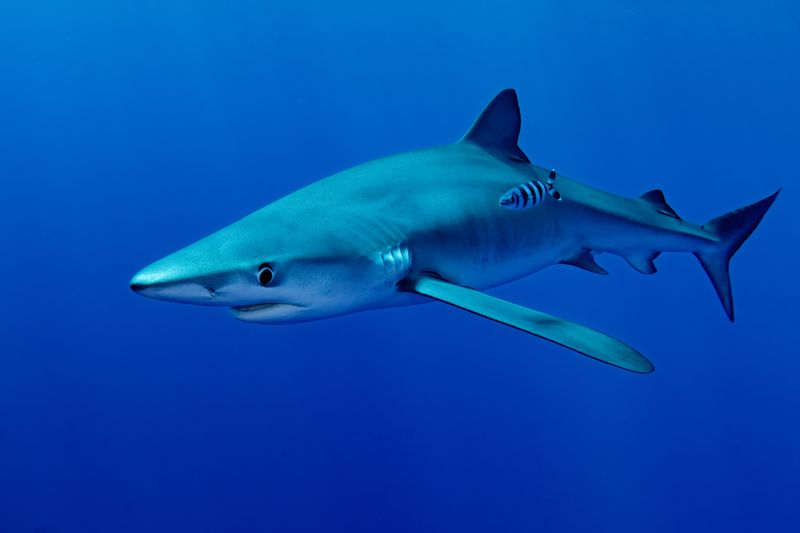
Characterized by their striking blue coloration, Blue Sharks are elegant swimmers found in the open waters of the Atlantic Ocean. They grow up to 12 feet long and are known for their slender, streamlined bodies.
These sharks are highly migratory, traveling vast distances across oceans. Blue Sharks primarily feed on small fish and squid, often hunting in groups. Their social nature and graceful movements make them a captivating sight in the ocean.
However, they face threats from commercial fishing, particularly for their fins, which are highly prized. Efforts to protect Blue Sharks focus on sustainable fishing practices and reducing bycatch. Their presence in the marine ecosystem is vital for maintaining the balance of the oceanic food web. Conservation measures aim to ensure these beautiful creatures continue to roam the seas.
9. Thresher Shark

Unique for their extraordinarily long tails, Thresher Sharks use these whip-like appendages to stun prey. Reaching lengths of up to 20 feet, half of their length is attributed to their tail. This distinctive feature makes them efficient hunters, particularly when targeting schooling fish.
Thresher Sharks exhibit a solitary lifestyle, often inhabiting deep, open waters. Their diet consists mainly of fish and squid, which they capture with swift, precise movements. Despite their size, they are not considered a threat to humans.
Overfishing and bycatch pose challenges to Thresher Shark populations, leading to conservation efforts aimed at their protection. Understanding their migratory patterns and habitat preferences is crucial for effective conservation strategies to ensure their survival in the wild.
10. Sand Tiger Shark

Despite their fearsome appearance, Sand Tiger Sharks are generally docile and pose little threat to humans. They can reach lengths of up to 10 feet and are often found near the sandy bottoms of coastal waters.
Their sharp, protruding teeth give them a menacing look, but they are primarily used for capturing slippery prey.
Sand Tiger Sharks are nocturnal hunters, feeding on fish, crustaceans, and squid. During the day, they are known to hover motionless in the water, a behavior made possible by their ability to gulp air and regulate buoyancy.
This ability allows them to conserve energy while waiting to ambush prey. Threats from fishing and habitat degradation have impacted Sand Tiger Shark populations. Conservation measures focus on habitat protection and sustainable fishing practices to ensure these remarkable sharks continue to play their role in marine ecosystems.

